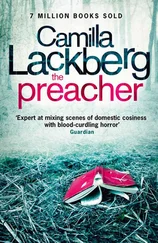This manual also undertakes to raise the standards and levels of competency of the student or practitioner. It is not a book on anatomy and physiology, but looks at the wider understanding that is needed in this totally holistic, natural therapy. The reader is made aware of the cellular make-up of the body, and of how each cell has one particular job to do, and even though it has its own in-built chemistry to carry out a particular function it does not accomplish all the activities that are necessary for its existence. This is all brought together by the co-ordination of the different mechanisms of the body to achieve balance and unity.
Material is presented to enable students to understand the different levels of understanding required for reflexology, and various ideas and theories are discussed. Readers should acquire a knowledge of how deeply relaxing reflexology is and how this benefits a wide range of disorders, whether related to stress, emotional or mental, or even more deep-rooted tensions leading to manifestation of physical problems. The expertise and enlightenment gained from this manual will enable the reader to conduct a therapeutic healing session for all ages, from the very young to the more elderly person, to the sick and infirm.
This practitioner’s manual enriches your knowledge and understanding of how reflexology works and how it is beneficial to those who are extremely fragile in health and how reflexology works safely by gently removing congestion or blockages, restoring balance and improving energy generally throughout the body. It explains how our feet are the very foundation of our body, and how any deviation from normal structure or function can be reflected back into the body, often resulting in stress and imbalances to organs and a burden on the skeletal function. All these observations are helpful in diagnostic techniques and foot analysis.
The text also explains how to use reflexology without risk, as with the correct treatment there is no great shock to the system, and each session is balanced according to each individual’s needs, thus allowing the body to adapt to the necessary changes that take place over a period of a few weeks, with more chronic problems often needing a little more time before they respond.
The book utilizes the concepts of zones and meridians throughout, and these are detailed in chapter 2. These channels are systematically mapped out showing the reflex point and acupuncture (acu) points that are linked to specific organs and functions of the body. This manual also takes you through the history of reflexology, from the very early beginnings of the discovery that pressure on specific areas of the skin brought about a therapeutic action on the functioning of different body organs, to the present-day standard and refinement of this therapy.
The text also outlines how reflexology has currently been lifted to new heights with in-depth training now covering a period of an academic year, setting high standards in professional practice. Values and ethics also are an integral part of the reflexologist’s work. Good and safe practice is explained throughout this manual, while professional standards are detailed and encouraged. Advice on setting up and running a reflexology practice is also included.
In conclusion, this work has the following aims:
• to give a knowledge of the history and theory of reflexology from its early methods and aims through to present-day evidence of the art and skill, and current techniques used throughout the world in clinical reflexology
• to develop the student or practitioner’s understanding and appreciation of the principles of reflexology and the holistic concept
• to create opportunities for the student or practitioner to learn how to assess the state of a person’s health and be able to identify where there may be an imbalance within the body by: observation – of the patient or client and of the hands, feet and ears; a knowledge of hand, foot, and nail conditions that may relate to a patient’s health; use of correct consultation procedures, including listening skills; palpation of specific reflex points, and understanding of the basis of reflex stimulation to analyse imbalances and to boost the body’s own healing process
• to explore promotion and maintenance of each individual’s health and emotional well-being through palpation of specific reflex points, and how these relate to the zone theory and the meridian theory
• to develop a student’s or practitioner’s competence and improve their practice, by making them aware of research and investigative procedures in relation to complementary medicine
• to enable students and practitioners to develop an understanding of general practice management.
By the end of the manual the student or practitioner will be able to:
• make a diagnostic assessment of a client before treatment, taking into account the previous medical history and contraindications if any, and evaluate all other relevant factors that may cause them an imbalance
• be aware of their own abilities and when it is necessary to refer a patient to other health care professionals if so required
• complete a full and thorough competent treatment procedure employing all the clinical skills acquired throughout their course of study, including knowledge of the zone and meridian theories, and be able to adapt treatment accordingly in respect of specific areas to treat, amount of pressure and length of treatment
• evaluate treatment sessions through practice and experience throughout the course, and develop both skills and practice using the cyclical learning process, that is, assessing, planning, carrying out procedures, evaluating when needed, and improving if possible
• promote and implement values of good and safe practice in reviewing future treatments with patients, and discuss with them any factors that could affect their health, such as behaviour patterns, lifestyle, nutrition and diet
• analyse and discuss all relevant articles and contemporary research regarding the practice of reflexology, both hypothetical or speculative and established theories and facts, and take account of other therapies that would be an adjunct to it.
1 A brief history of reflexology
Healing by touch is as old as mankind. It requires insight, intuition and the use of specialized skills and techniques.
The word ‘massage’ comes from the ancient Arabic word ‘ mass ’, meaning ‘to touch or palpate’. Touch or massage has historically been used as a restorative to bring back health and strength. Many of the touch therapies are based on the theory that for good health the body’s energy must flow unimpeded, or that a holistic and integrated approach to maintain health should be followed. For instance, Hippocrates (460–375 BC) advocated a system of treatment that incorporated diet, fresh air and exercise (or gymnastics, as they were known then) and advised massage, or rubbing an area of the body, as a therapeutic relaxation.
This chapter examines the ancient and recent origins of reflexology, both in the West and in the Orient, and the recent development of the zone concept.
The Egyptian origins of reflexology can be seen in a frieze at the tomb of Ankhmahor that is thought to illustrate a reflexology treatment taking place (figures 1.1and 1.2). This tomb in Saqqara is known as the ‘physician’s tomb’ owing to the marvellous portrayal of many medical scenes found on its walls. The tomb was discovered by V Loret in Egypt in 1897. Saqqara is one of the richest archaeological sites in Egypt, containing monuments constructed over a span of more than 3,000 years, the earliest being the Mastabas, the earlier name for a tomb. Saqqara is the largest necropolis found (a large burial ground of the ancient city). Activity was extremely intense in this area during the Old Kingdom.
Читать дальше











